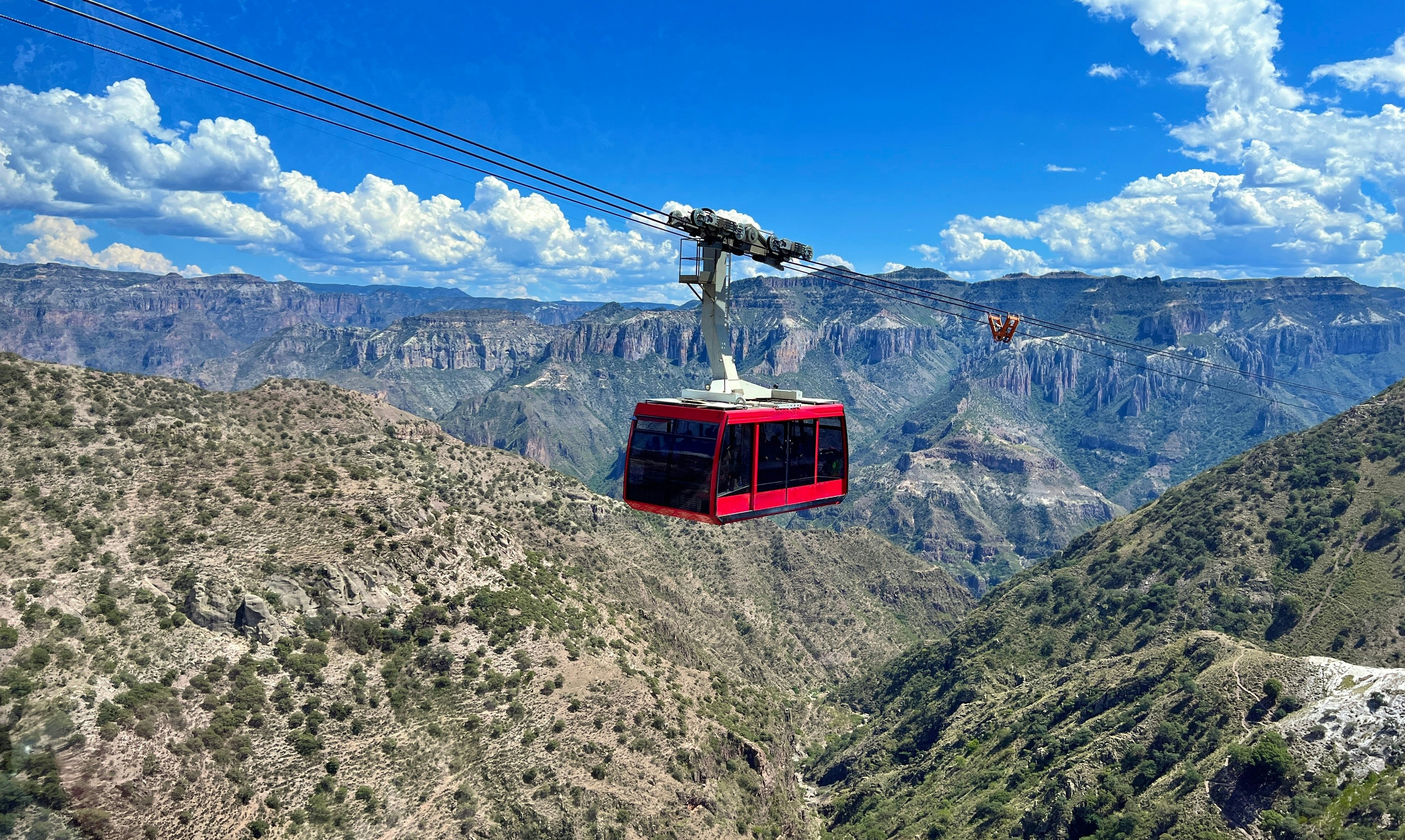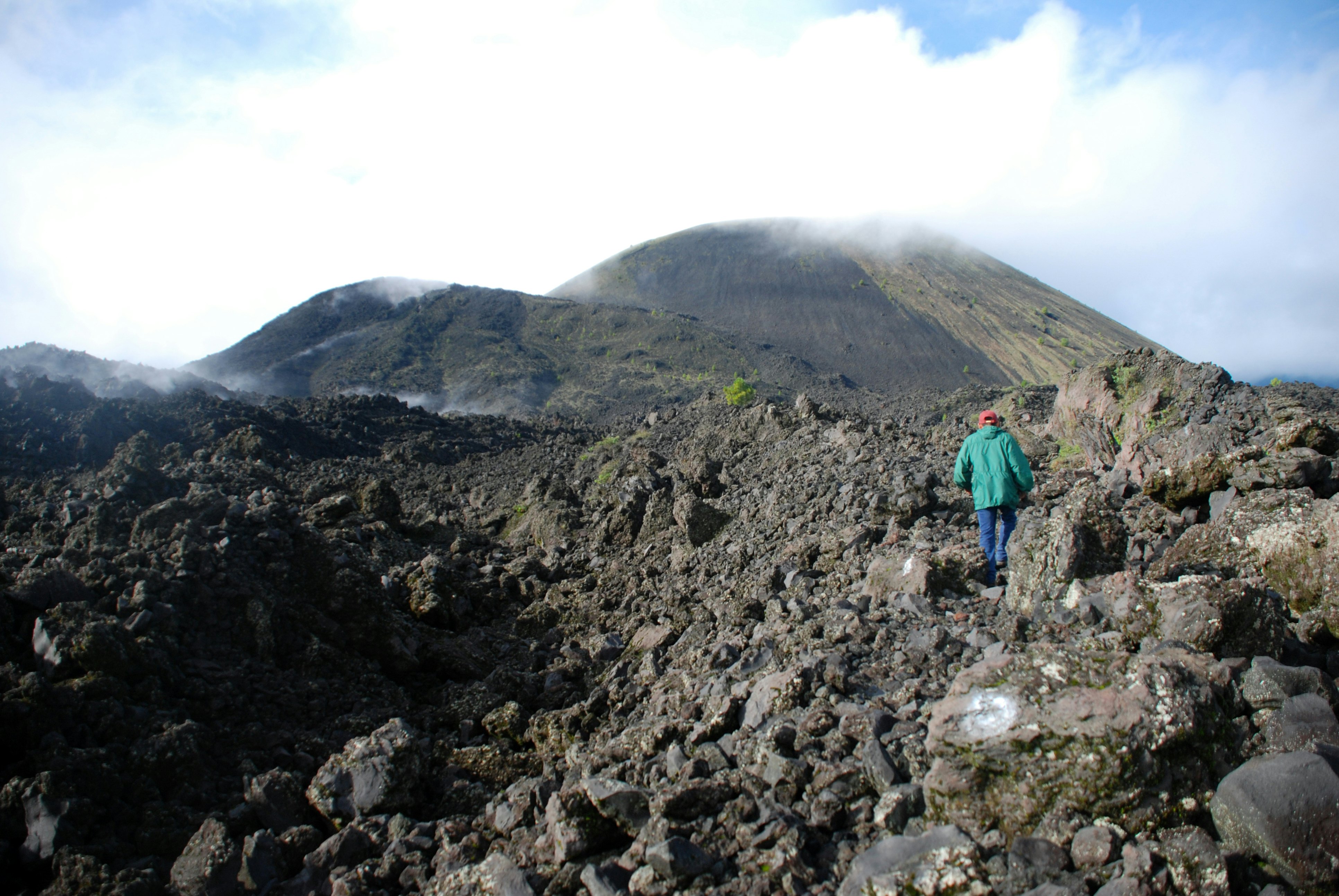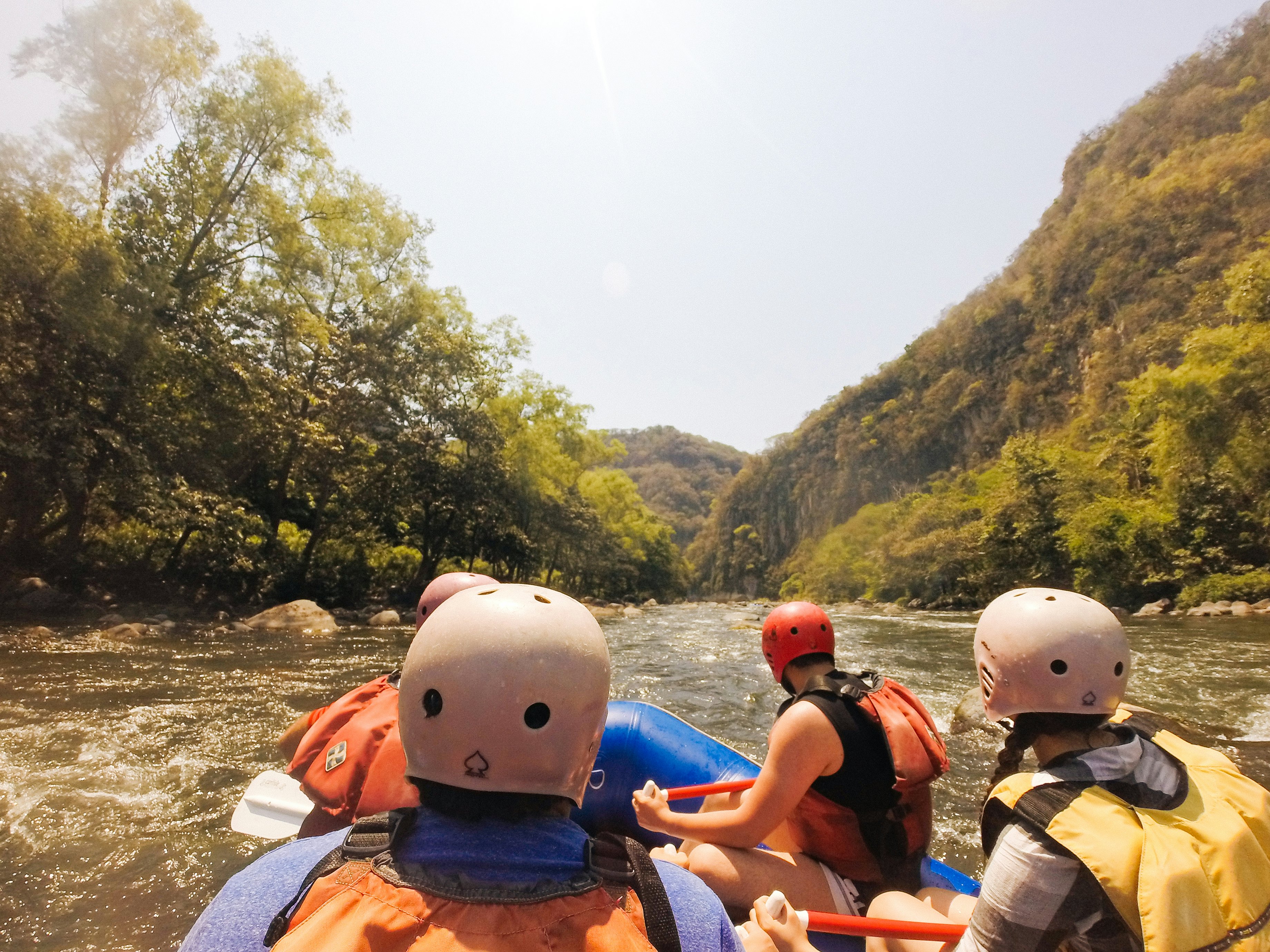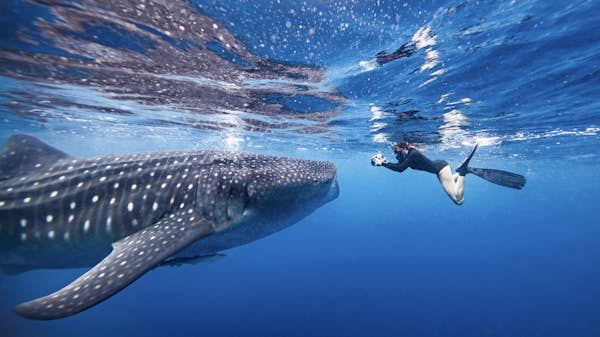Home to parched deserts, verdant rainforests and most ecosystems in between, Mexico offers a dazzling array of outdoor adventures. Think zip-lining over canyons, snorkeling amid coral reefs and paddling your way over frothing rapids against a jungle-clad backdrop.
Mexico is the place for pursuing your passion (or learning something new), whether that’s surfing, hiking, bird-watching, scuba diving or kiteboarding. But sometimes all you have to do is stay put and watch nature’s majesty, at such cyclical displays as the gathering of monarch butterflies or the mad dash of just-hatched sea turtles into the sea.
While it’s hard to narrow things down in such a vast country, here’s a roundup of our favorite outdoor experiences in Mexico.
1. Dive or snorkel over coral reefs
Take the plunge into all Mexico has to offer – literally. For ocean divers, the calmest conditions are found in the warm, clear waters of the Caribbean coast, off Quintana Roo and along the Yucatán Peninsula’s Riviera Maya and Costa Maya. Baja also offers excellent underwater opportunities, especially the coral reef near Cabo Pulmo, plus Loreto and areas around La Paz. Huatulco in Oaxaca has over 30 fish-filled dive sites. The Gulf coast, too, has some great snorkeling spots, such as the beautiful sandbar of Cancuncito. On Isla Mujeres, Isla Holbox and Baja’s La Paz, you can dive with whale sharks, the ocean’s gentle giants.
Advertisement

2. Soar over Copper Canyon
In Mexico’s north, Parque de Aventura Barrancas del Cobre is the most visited part of Copper Canyon (Barranca del Cobre). This adventure park brims with exciting activities, including Mexico’s longest series of tirolesas (zip lines) suspended over the dramatic canyon scenery.
Whizz 9840ft (3000m) across the canyon on the teleférico (cable car) to Mesón de Bacajípare, the halfway point from the canyon floor. From there, drink in 360-degree vistas of the canyon from numerous viewpoints, or hire a Tarahumara guide to lead you on hikes ranging from 40-minute rambles to four-hour treks.
The park’s most attention-grabbing activity is the ZipRider, the world’s second-longest zip line at an extraordinary 1½ miles (2½km) in length, whose circuit of seven zip lines allows you to see even more of the spectacular canyon. Those seeking yet more thrills should tackle the via ferrata, a combination rappelling/rock-climbing course.

3. See millions of monarchs
Canopies of golden-orange butterflies cover the forests and hillsides in the Reserva de la Biósfera Santuario Mariposa Monarca (Monarch Butterfly Biosphere Reserve), perhaps Mexico’s most astonishing yearly natural phenomenon. It’s the kind of annual event to plan a trip around: between late October and mid-March, the migrant monarchs cover every surface, weighing down fir tree branches and changing the landscape into a permanent sunset as the butterflies winter far from the freezing Great Lakes. It is one of the planet’s most spectacular migrations – and not to be missed.

4. Climb a volcano
As volcanoes go, Paricutín is barely an adolescent. Having blasted out of a Michoacán maize field in 1943, it’s one of the youngest volcanoes on Earth, and one of only a few whose life cycle has been fully studied by scientists. What’s more, the dormant, 1345ft-high (410m-high) cone is relatively easy to climb. Some rock-hop across barren lava fields to bag the peak; others ride horses through hot black sand before dismounting for the final summit scramble over volcanic scree. The goal remains the same: a chance to stand atop a veritable geological marvel.
For something more challenging, set your sights on Pico de Orizaba, at 18,490ft (5636m) the country’s highest volcano. Other legendary climbs are Volcán San MartÍn, the sometimes snow-capped Nevado de Colima and Iztaccihuatl peak.
5. Surf legendary waves
With 7000 miles (11,265km) of coastline, it’s not surprising that Mexico’s up there when it comes to rolling waves…and tackling them. The country’s best surfing is found primarily along the Pacific coast, with Puerto Escondido, Mazatlán, Sayulita, La Saladita, La Ticla and Troncones among the hot spots. Oaxaca’s largely unspoiled coast hides many surprisingly under-the-radar spots, too. The Baja Peninsula is another favorite, with relatively uncrowded waves in San Miguel (near Ensenada) and many beaches south with more of the same. In the north of Baja, Cerritos and Zippers both have big swells and draw big crowds.
Advertisement
There’s a decent range of conditions and a good variety of left and right breaks for all surfing levels, from rookies to advanced. While conditions vary by place, waves are generally at their peak between April and October. Be aware that hurricanes between July and October can bring in huge, dangerous swells.

6. Witness a turtle phenomenon
Just east of Puerto Escondido in Oaxaca, the 9¼-mile-long (15km-long) beach sanctuary of Playa Escobilla is one of the few places in the world where arribadas occur. In this astonishing phenomenon, tens of thousands of olive ridley turtles come ashore together, with waves depositing turtles onto the beach like giant stones with flippers; they then pull themselves across the beach to lay their eggs. Over the course of a year, more than a million olive ridley sea turtles nest here. Come around the new moon, especially from July to February, to see the highest number of turtles. It’s an unforgettable sight.
If you aren’t fortunate enough to see them by night, you can participate in late-afternoon turtle releases, watching tiny hatchlings scurry into the imposing ocean for the first time. Either way, only guided visits are permitted here; book a visit with the locally run Centro Ecoturístico Escobilla.
7. Go bird-watching
Given the diversity of Mexico’s ecosystems, it’s little wonder that the country is an excellent destination for birders. Copper Canyon alone has over 400 resident, migrating and wintering species, while Sian Ka’an Biosphere Reserve near Tulum is great for spotting endemic species.
In Oaxaca, the 3¾-mile-long (6km-long) Manialtepec Lagoon, beginning 8¾ miles (14km) west of Puerto Escondido along Hwy 200, is an essential spot for bird enthusiasts and a fascinating place for anyone interested in nature. Ibises, roseate spoonbills, parrots, pelicans, falcons, ospreys, herons, kingfishers and several types of hawk and iguana call Manialtepec home for at least part of the year. The best bird-watching months are December to March, and the best time of day to set out is soon after dawn. For organized trips contact Mexican Birding Tours and Wildside Nature Tours.

8. Take a swim in a cenote
The Maya considered them sacred gateways to the underworld. And once you visit your first cenote (limestone sinkhole) you’ll better understand why. More than 6000 cenotes dot the Yucatán. Some, like the spectacular settings of Santa Barbara, and Cenote X-Batún, make for refreshing, fun-filled swimming holes; others, such as the underground cave system at Parque Dos Ojos, draw divers from far and wide.

9. Paddle the white water of the Río Antigua in Veracruz
Sitting in a lush valley 26 miles (42km) southeast of Xalapa, tiny Jalcomulco hugs the Río Antigua and is encircled by jungle-covered hills. While the area is rich with caves and luscious swimming spots, it’s most famous for its rapids – which are suitable for all levels of whitewater enthusiasts. Book ahead as there are minimum numbers needed.
Jalco Expediciones offers rafting packages that typically include other adventure activities, such as rappelling, horseback riding, mountain biking, canyoning and zip-lining. In jungly grounds 2½ miles (4km) north of town, México Verde is another experienced outfitter offering packages, including glamping options in safari tents. It also has a restaurant, pool, spa and temascal (traditional sauna).

10. Learn to kiteboard in Baja
Tucked on the far eastern side of the La Paz peninsula in Baja, La Ventana was a relatively unknown spot about 20 years ago. Today, it’s a hot, hip destination that’s on any wind-sporter’s map – or should be, thanks to unparalleled winter trade winds that any windsurfer, kiteboarder or foil surfer would die for. Indeed, at times, it seems the whole horizon is filled with colorful sails and kites. If you’re interested in learning kiteboarding, you’ve come to the right place. Elevation Kiteboarding, a school at Baja Joe’s Resort, offers classes from beginner to advanced levels.
11. Gallop across the desert
Just outside of San Miguel de Allende, Coyote Canyon Adventures offers guided rides to Cañada de la Virgen, a pre-Hispanic pyramid complex that dates to 540 CE. Alternatively, ride with the Morin Ruiz family at Rancho Xotolar – they’ve been working this ranch next to the ruins for four generations. Both operators also do tours that take you on horseback through the semi-desert to beautiful canyons. Certain tours also may include learning to milk a cow and even how to make enchiladas.

When to plan your outdoor adventure in Mexico
Some outdoor activities, such as bird-watching and trekking, are great year-round. But other adventures are highly seasonal.
The best times for diving and snorkeling in Mexico
Humpback whales and whale sharks are seen off the Pacific coast and Baja in the winter months, while September and October are best for spotting hammerheads in the Sea of Cortez. Visibility is best off the Caribbean coast in August and September.
The best times for whitewater rafting in Mexico
October is considered the best month, though rafting is possible year-round.
The best times for surfing and kitesurfing in Mexico
April to October is the surfing and kitesurfing season in Baja and the Pacific coast.
The best times for wave hunting in Mexico
There are a couple of good websites for helping you figure out ahead of time the best places and times to go surfing and to find providers for your outdoor activity of choice. Surfline has webcams, surfing forecasts, surf-spot info and more, while Planeta is a great resource on active and responsible tourism.

